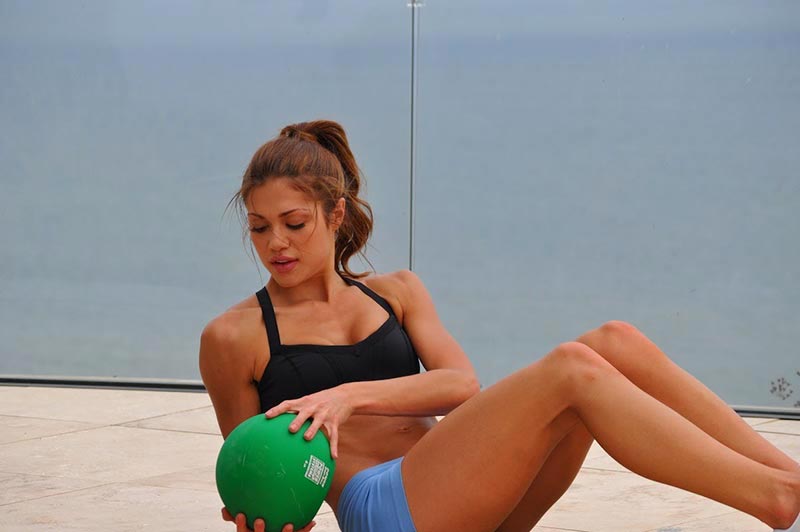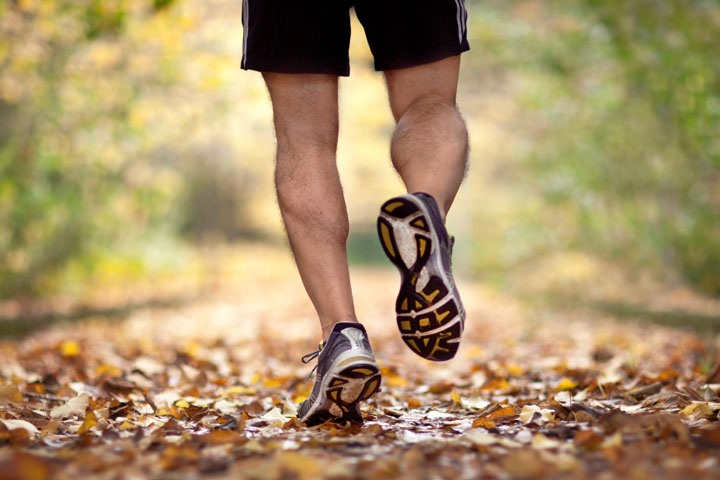
Awesome Exercises for Firm, Toned Abs
In one study, adults who did seven abdominal exercises, five days a week for six weeks, did not lose any fat at all from their belly region. In fact, they lost no fat anywhere on their bodies.
No matter how much you train your abs, if you have excess fat layered on top you won’t be able to see them. Men need to get their body fat down to about 6 percent and women around 9 percent in order to achieve that classic six-pack.
By avoiding processed foods in general, and focusing instead on whole, preferably locally grown organic foods, cooked at home, you can circumvent many of the greatest dietary obstacles. The combination of intermittent fasting and high intensity training (HIIT) is a particularly potent combination for weight loss, as when done in tandem it really optimizes your body’s ability to burn off excess body fat.
As long as you’re addressing your diet (and implementing intermittent fasting, if need be, to boost your fat-burning capability) abdominal exercises can then help firm, tone, and strengthen your core muscles.
Aiming Beyond the Six-Pack
Strong abs isn’t just a cosmetic issue. Your abdominal muscles provide the foundation for movement throughout your entire body, and strengthening them can help protect and support your back, make your spine and body less prone to injury, and help you gain greater balance and stability.
In essence, a strong core allows you freedom of movement, which is really a quality of life issue. Having a strong abdominal wall gets increasingly more important the older you get, so ab exercises are not just for beach-bound Millennials.
Several studies have been conducted to determine the most effective exercises to activate your core muscles. Overall, any exercise that requires constant stabilization throughout the movement ignites the most muscle activity. Planking, push-ups, and crunches on an exercise ball are but a few examples.
It’s also important to perform abdominal exercises in a variety of ranges of motion, in different angles and positions, in order to engage all the muscles that make up your core.
Last but not least, what works for one person or body type may not work for another, so the key is to find the variety that works for you, is challenging for you, and produces visible results. Exercises that train your core muscles include:
- Traditional exercises, such as a standard crunch with rotation, or a standing rotation with a light hand weight.
- Functional exercises, including work on an exercise ball.
- Stabilizing exercises, such as lying on the floor and pulling your belly back toward your spine and holding that position while breathing deeply. Once this is mastered, you can add movement such as a slow bridge or extending your leg while maintaining the drawn-in posture.
- Extension exercises. Back exercises are often ignored when devising a core training program. However, it’s an integral part of your core routine.
- A good exercise to start with for extension is lying on your stomach with arms extended above your head. Simultaneously raise both arms and legs off the floor. Hold for a count of five, and slowly return to the floor.
Stand-Up Ab Exercises
A number of abdominal exercises can be done standing up, making them ideal for doing at the office where you probably don’t want to get down on the floor. Focus on your form rather than a specific number of repetitions. As you perform each movement, be sure to engage your abs. For example, when you lift your leg, use your ab muscles rather than your quads or glutes.
March with a twist: Start by standing with your feet hip width apart, with your arms gently extended overhead. Bring your right elbow down across your body while simultaneously bringing your left knee upward, twisting at the waist, so that your knee and elbow meet.
Return to starting position and repeat on the other side. Be sure to squeeze your obliques throughout the movement. Alternate sides for about one minute.
Standing stabilization: Stand with feet hip width apart, holding a medicine ball or dumbbell of a suitable weight in both hands. Extend your arms out in front of your body; keeping your arms straight, rotate your torso to the right, then return to center. Do 10 reps. Repeat on the left side 10 times.
Weighted side bends: Select a heavier dumbbell than normal and hold it your right hand. Stand with feet hip width apart, and bend from your waist to the right. As you pull your torso back up, engage your core muscles. Repeat for about one minute, then alternate sides.
Standing side crunch: Stand with your feet slightly wider than hip width with a dumbbell in each hand; arms raised in goalpost position.
Bending at the waist, bring your left elbow down while simultaneously raising your left knee, so that your elbow meets your thigh just above the knee. Keep your arms and shoulders stationary throughout, as this forces you to use your obliques. Repeat for about one minute on each side.
Crossover toe touches: Stand with feet wider than hip width apart, arms extended in a T formation.
Keeping your arms straight out, rotate your torso downward and across to the right, touching your right hand to the outside of your left foot. Return to starting position and repeat on the other side. Alternate sides for a total of about two minutes.
How to Optimize the Ab-Crunch
There’s quite a bit of controversy over whether the ab crunch is effective or a complete waste of time. Research has produced support for both stances. What it really comes down to is your form. When done correctly, crunches can be very effective. To perform a crunch properly:
- Lie on your back with your feet against a wall (so your knees and hips are bent at a 90-degree angle).
- Tighten your abdominal muscles and raise your head and shoulders off the floor.
- Try crossing your arms on your chest instead of behind your head (to avoid straining your neck).
- Hold for about three deep breaths, lower to the ground, and repeat.
Proper Push-Ups Work Your Abs Too
Push-ups are another exercise that can target your abdominals, provided you do them correctly. I recommend watching Darin Steen’s demonstration of the proper form above, but here are some key points to remember:
- Keep your body stiff and straight as a plank
- Elbows at a 45-degree angle from your sides
- Breathe in on the way down; breathe out on the way up
- Lower your body all the way down, allowing your sternum to gently touch the floor
Reverse Push-Up — Another Core Blasting Exercise
Another technique that can give you a powerful core-building workout is the reverse push-up. A reverse push-up involves lowering your body into the typical push-up position, then, instead of pushing your body upward, bending your knees and moving your body backward before again moving forward into the push-up starting position. This intense movement will work out your arms and shoulders while also pushing your core muscles to the max.
Planking Can Provide a Measure of Your Core Strength
Planking has become increasingly popular for core strengthening, and for good reason: It works. The plank is one of several fitness tests that can give you an indication of your potential health risks. If you cannot hold plank position for two minutes, you’re likely lacking in core strength. It may also be an indication that you’re carrying too much weight and would benefit from shedding a few pounds.
Planking engages multiple muscle groups simultaneously, making it a very efficient and effective core-strengthening exercise. You can also perform the plank in different directions: front, side, and reverse — each direction engaging different sets of muscles for all-around toning and strengthening.
The front-facing plank engages the following upper- and lower body areas: abdominals, lower back, chest, shoulders, upper trapezius and neck, biceps, triceps, glutes, thighs, and calves. Side planking is particularly effective for training your obliques, which really helps stabilize your spine, while the reverse plank places the focus on your glutes, hamstrings, abs, and lower back.
Planking 101
In the video above, fitness trainer Jill Rodrigues demonstrates a variety of front planking positions, including the basic, intermediate, and advanced basic plank, as well as planking with leg raises, knee raises, arm raises, and toe taps. Proper form is important to avoid injury, and you’ll want to be particularly careful if you have a bad back. Start off by holding the plank position for several seconds, slowly working your way up to where you can hold it for about two minutes.
To perform a front-facing plank correctly, keep the following points in mind:
While in plank position, pull in your bellybutton. Your bellybutton is attached to your transverse abdominis, that inner sheath that holds your gut inside and gives your spine and vertebrae a weight belt-tightening type of support. By pulling it in, you begin to contract that deep inner transverse abdominis muscle. If you want to work your six-pack rectus abdominis muscle, drive your chin down toward your toes while you’re focused on squeezing your bellybutton in.
Next, do a Kegel squeeze. A Kegel squeeze is performed by drawing your lower pelvic muscles up and holding them up high and tight.
For men who aren’t familiar with that term, it’s similar to trying to stop urinating in the middle of the flow. This squeeze will allow you to feel and focus on your abdominal muscles.
To perform a side plank, start by lying down on your right side, keeping your legs straight. Next, raise yourself up on your right forearm; your body should form a straight, diagonal line from head to toe. Your hips and knees should be off the floor. Brace your abs and hold for one minute.
For the reverse plank start out by sitting on the floor with your legs straight out in front of you. Placing your palms on the floor, below your shoulders, squeeze your buttocks and thighs and then push your body up into a reverse plank position. Alternatively, you can begin placing your elbows rather than your hands on the floor, for a less dramatic lift. Again, keep your body in a straight diagonal line from shoulders to heels, making sure your hips are in line.
Build a Strong Core for Life Beyond the Beach
Again, building a strong core isn’t just about developing flat abs. It’s important for overall health, stability, mobility, and good posture too. Moreover, it can help prevent back pain, which is the most common cause for disability across the world.
To be effective, make sure you maintain a stable core throughout the movement, as this helps maximize muscle activity. Also incorporate a wide variety of exercises, and switch it up by adding versions that challenge your muscles with a variety of ranges of motion, angles, and positions.







Leave a Reply